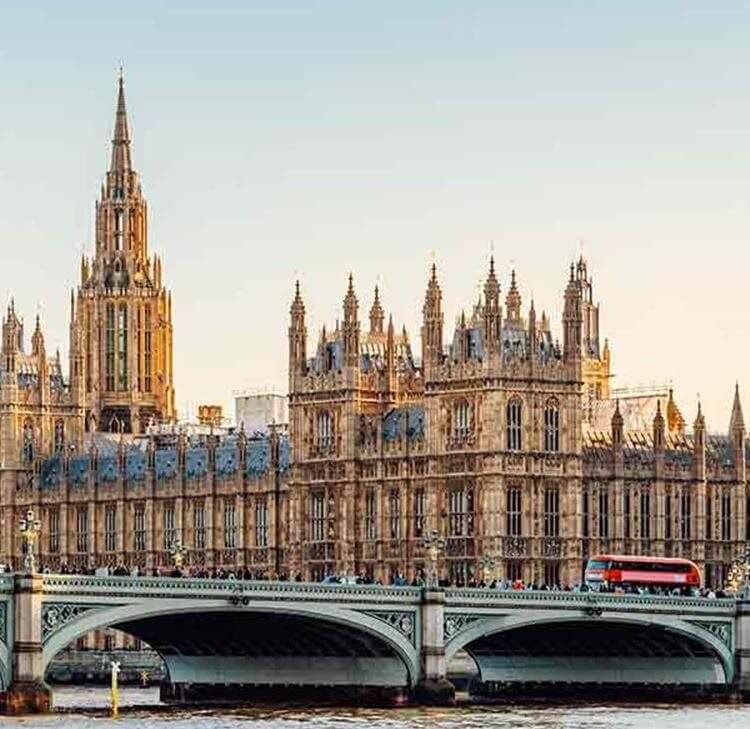The Subsidy Control Act 2022 (the Act) has been in force since 4 January 2023. Seeking to canvass views on how to improve the Subsidy Control Regime, the Department for Business and Trade (DBT) ran a consultation on the Act from 26 November 2024 to 21 January 2025.
The two main focuses of this consultation were:
- Amending the threshold at which subsidies are designated Subsidies and Schemes of Particular Interest (SSoPI);
- Creation of new Streamlined Routes under which certain subsidies do not require an assessment against subsidy control principles.
On 7 April 2025, DBT released the results of this consultation.
Amending the SSoPI threshold
Currently, subsidies over £10 million (or over £1 million but which equal £10 million together with related subsidies from the previous three financial years) are designated as SSoPIs. Within sectors deemed to be sensitive, all subsidies over £5 million by the same tests are SSoPIs. All SSoPIs must be referred to the Subsidy Advice Unit (SAU), which sits within the Competition and Markets Authority. The SAU reviews the referral and publishes a non-binding report on its website.
Following the consultation, the Government will raise the threshold for when a subsidy is designated as an SSoPI in non-sensitive sectors from £10 million to £25 million. This is likely to come as a relief to public authorities looking to grant larger subsidies. Whilst of course the requirement to refer to the SAU is an important protection to ensure public authorities are complying with the Act, especially when there are large amounts of money involved, the process of a referral is time-consuming (normally taking around 3-4 months in practice) which can impact on project timescales.
Creating new streamlined routes
A Streamlined Route under the Act allows public authorities to grant a subsidy without assessing it against the subsidy control principles, provided that the subsidy complies with any conditions set out in the applicable streamlined route. These subsidies are also not subject to review by the SAU. Therefore, they provide an easier and more straightforward basis to public authorities for awarding subsidies. There are currently three Streamlined Routes:
- research, development and innovation;
- energy usage; and
- local growth.
In response to the consultation, the Government will create two new streamlined routes: one for arts and culture and another for community regeneration. Whilst we await the full detail of the types of costs/projects which will fall under these new routes, our view is that any new routes are welcomed and will make the provision of targeted subsidies much easier for public authorities.
It was expected when the first streamlined routes were introduced that Government would continue to add to them as the regime developed, but until now those additions have not been forthcoming. The Government also stated in its response that it continues to consider further streamlined routes for high frequency low risk subsidies. It is hoped that the introduction of these two new streamlined routes might open the floodgates for more in the not too distant future.
Contact

Joe Tapsell Chapman
Trainee Solicitor
joe.tapsellchapman@brownejacobson.com
+44 (0)330 045 1006
Discover more
Related expertise
You may be interested in
Legal Update
Government publishes response to consultation on Subsidy Control Regime
Legal Update
Refining the UK subsidy control regime consultation
Legal Update
The housing benefit subsidy deficit: Strategies for funding temporary accommodation
Published Article
The legal and planning hurdles that must be overcome to get Great British Energy generating
Legal Update
Update on local authority owned companies: Part 1 subsidy control
Legal Update
Does the subsidy control regime already need changing for the government to kickstart economic growth?
Legal Update
The transparency regime under the Subsidy Control Act - how it could be improved
Legal Update
Subsidy control guidance update - welcome guidance on 'small subsidies' introduced
Legal Update
Subsidy control: Guide to streamlined routes for universities
Legal Update
Subsidy control - lessons learned in the first year
Legal Update
Review of a subsidy control decision: The Durham Company Ltd v Durham County Council, 27 July 2023
Press Release
Browne Jacobson advising the Welsh Government on the delivery of significant number of renewable energy projects
Legal Update
Subsidy control lessons to be learnt from Bulb
Legal Update - Public matters newsletter
Public matters - February 2023
Legal Update
Government introduces first Streamlined Subsidy Schemes under new regime
Legal Update - Public matters newsletter
Public matters - January 2023
On-Demand
The Subsidy Control Act 2022. Putting the new regime into practice
Legal Update
Government provides guidance on new Subsidy Control Database and the calculation of their value
Legal Update
The impact of the new Subsidy Control regime on public regeneration projects
Legal Update
Subsidy Control Act 2022: economic queries
In July, the long-awaited statutory guidance on the Subsidy Control Act 2022 (Act) was published in draft form (Draft Guidance). A consultation on the draft guidance has recently ended and the results have not yet been published – it may therefore change before the final version is published.
Legal Update
Economic activity for the purposes of the Subsidy Control Act 2022
When carrying out a mix of activities it can be less clear if it is 'economic'. We look at the impact on local authorities & charities.
Opinion
The UK’s first domestic subsidy control case
We waited more than a year for it, but the wait is over – we finally have a domestic case on the new subsidy control regime.
On-Demand
Subsidy control webinar - 30 March 2022
In this on-demand session, Alex Kynoch and Angelica Hymers explore the practicalities of complying with the new Subsidy Control Bill, and the impact of illustrative guidance and policy statements recently published by the Government.
Published Article
The Subsidy Control Bill – Illustrative Guidance and Regulations – legal certainty vs flexibility
It has been a turbulent couple of years for those involved in subsidy control, and 2022 will be equally challenging. The Subsidy Control Bill (Bill) will take effect in 2022.
Legal Update
Subsidy control regime: new Bill working its way through Parliament
2022 is the year in which the UK’s new post-Brexit subsidy control regime will take effect. The new Subsidy Control Bill will form the backbone of the UK’s new subsidy control regime. The new Bill will replace the EU’s state aid rules, which applied until the end of the Brexit transition period.
Legal Update
New Year, New Subsidy Control Regime Part 2: Schemes, enforcement and transparency under the Subsidy Control Bill
In the first part of this article, we discussed the application of the Subsidy Control Principles. In part 2, we look at how Streamlined Subsidy Schemes will be used to grant certain subsidies more quickly, and at the enforcement and transparency provisions of the Bill.
Legal Update
New Year, New Subsidy Control Regime Part 1: The principles, restrictions and exemptions under the Subsidy Control Bill
The repeal of the State aid rules and their replacement by the regime stemming from the UK-EU Trade and Co-operation Agreement (TCA) in 2021 meant that practitioners and public bodies had to acclimatise to a new, more flexible but less certain approach.
Press Release
Browne Jacobson’s government & infrastructure lawyers advise on first South West based green hydrogen production project
Browne Jacobson’s specialist government and infrastructure team have advised Canford Renewable Energy Ltd on the delivery of its Dorset Green H2 facility.
Published Article
Subsidy control after Brexit - a practitioner's perspective
Back in late 2020, we waited expectantly for news of what the rules on state aid were going to be when the Brexit transition period ended on 31 December.
Legal Update
Consultation on new UK subsidy control regime
It is vitally important that public bodies make use of this opportunity to have their views heard and to shape the future of the new subsidy control regime.
Opinion
Consultation launched on the future of subsidy control law
The Department for Business, Energy & Industrial Strategy has just launched its consultation on the future of subsidy control law (previously known as state aid) in the UK.
Legal Update
New year, new-ish state aid rules: the new subsidy control regime
Until a formal subsidy regime is put in place funding bodies must grapple with the complex and challenging exercise of legal obligations from the UK-EU TCA and numerous trade agreements to grant funding.
On-Demand
State aid and subsidy control - post Brexit
Opinion
New Year, new-ish state aid rules
From 1 January 2021 the state aid principles set out in the Trade and Co-Operation Agreement are incorporated into law by the EU (Future Relationship) Act 2020.
Legal Update
State aid - De Minimis Regulation - Article 3 and 6
The case of Istituto nazionale per l’assicurazione contro gli infortuni sul lavoro (INAIL) v Zennaro Giuseppe Legnami Sas di Zennaro Mauro & C concerns the application of the De Minimis Regulation.
Legal Update
Commission decisions reinforce the position on when measures adopted by publicly owned companies will be classed as state resources for the purposes of the state aid rules
Are measures adopted by publicly owned companies state resources for the purposes of state aid rules?
Legal Update
European Commission amends the Temporary Framework and prolongs existing state aid rules
The European Commission has taken this decision due to the effects of the current crisis and after consultation with member states.
On-Demand
COVID-19 for local authorities, arms length bodies and government - 30th April 2020
An update on current issues including avoiding legal challenge to procurement decisions, public decision making, state aid and commercial and supply chain.
Legal Update
The new State aid Temporary Framework
The new State aid Temporary Framework has been adapted by the European Commission due to the disruption that the coronavirus has caused.
Legal Update
EU adopts Temporary State aid Framework in response to COVID-19
The European Commission has adopted a Temporary State Aid Framework to increase Member States’ ability to support their economies in the light of the COVID-19 pandemic. It did the same thing in 2008 as a response to the global financial crisis.




















